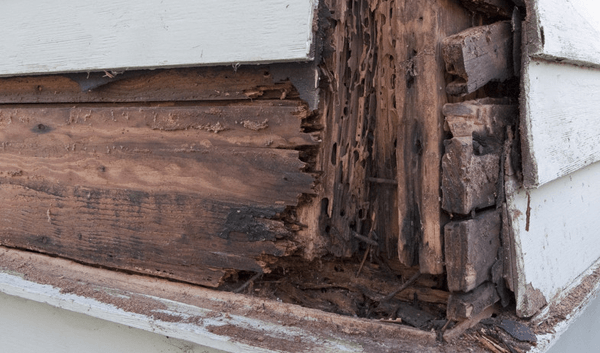Property Preservation Services
Our Property Preservation Services:
Electro-osmotic Damp Proofing System.
This is a chemical free damp proofing system, which utilises the principle of electro-osmosis. Electrico-osmosis occurs when an electrical potential is applied across a damp porous material, which causes a force to be exerted on the water, which then moves towards the cathode (earth).
The system involves inserting platinum coated wire nodes into the wall at regular intervals. These anodes (which are joined together by plain titanium wire) are placed around the building in a ring main like configuration. One end is connected to a low voltage power supply and the circuit is completed at the other end by an earthing rod (cathode) driven into the ground below that of the anodes and at a distance of at least 2 metres away from the nearest anode. The completed and operational system then provides the electrical potential, which stops rising damp and allows the wall to dry out.
It is common in a wall suffering from rising damp for salt-water to concentrate in the wall. As the wall dries out following insertion of a damp proof course these salts may be deposited on or near the surface and can give rise to efflorescence. If the salts are hygroscopic, damp patches may also develop when the ambient humidity is high unless steps are taken to ameliorate the problems. Failure to do so may allow or give rise to other dampness problems of a more persistent nature. It is essential, therefore, that a suitable replastering schedule is adopted following the insertion of a damp proof course. Replastering should be carried out as long as possible after the insertion of the remedial damp proof course. Ideally the new plaster should be applied to dry walls but in any case a drying period of at least 14 days should be allowed between installation and replastering wherever possible
Mortar Injected Damp Proof Courses.
A specially formulated dry mix of cement, quartz and reactive chemicals which when mixed with water, and inserted as described will create a chemical damp-proof course. The product is particularly useful in random stone wall constructions. The chemicals release and react and form a crystalline growth which penetrates and blocks the capillaries, pores and fine cracks in mortar joints.
Silicone Injected Damp Proof Courses.
This system uses a water based fluid, which is injected, into the mortar joints to form a continuous barrier to the passage of moisture rising from the ground. After injection the fluid reacts with carbon dioxide to form a water repellent silicone resin network within the capillaries of the substrate. This silicone resin network is permeable to water vapour which means that the walls can breathe and dry out naturally.
Studded Membrane Systems
Studded membrane systems are used to achieve a dry internal surface in situations where dampness is penetrating laterally. Such instances occur where external ground level is high. The most effective solution is to lower the ground level. However in many instances this is not practical. The alternative therefore is to apply a membrane on the internal wall surface.
The membranes can be self supporting or may require timber framing within a secondary wall depending on water pressures and construction. They provide a water vapour barrier and create a healthy internal environment.
Woodworm
In Northern Ireland the common furniture beetle is the most prevalent species that attacks seasoned timber. Adult beetles lay their eggs in seasoned timber and these hatch after 3-4 weeks. The resulting grubs burrow into the timber for anything between 3 to 5 years and the resulting adult beetles eventually emerge during the months of April/September through the characteristic small circular bore holes
When an infestation has been identified it is essential to determine if the insects are active. If the infestation is old and there is no structural damage no treatment is required.
It the infestation is active treatment is carried out using a microemulsion insecticide fluid. The most common areas treated are roof and floor timbers. In cases where structural damage has been caused localised repairs are carried out. In severe cases where widespread structural damage has occurred we would recommend that a structural engineer is engaged and his recommendations acted upon.
Insecticide Concentrate Fluid:
The insecticide fluid used is a third generation Bicontinuous microemulsion formulated for the eradication of common furniture beetle (Anobium Punctatum) and other wood boring insects.
Benefits
- Excellent penetration into timber (in terms of extent and speed)
- Non-flammable
- Extremely low odour
- Effective against all wood-boring beetles
- One hour re-entry formulation
- Non-hazardous
- Traditional permethrin content (0.2%w/w)
- Truly water based
- Novel surfactant technology gives dilutions with low corrosion and staining properties
- Surfactants used are non-hazardous and biodegradable
Dry Rot
Dry rot is caused by a fungus called Serpula lacrymans and the first sign of its presence may be the collapse of a portion of apparently sound timber. Dry rot most often occurs in damp timber which is in contact with, or embedded in, wet brickwork or masonry. The fungus is very sensitive to temperatures of over 25 degrees centigrade especially in drying conditions. Exposed timbers and timbers where there is good ventilation are rarely affected.
Upon identification of an outbreak of dry rot the first step is to find and eliminate the source of the dampness. The fungus cannot survive without moisture. The second step is to promote the rapid drying of the structure. Once the conditions, which enable dry rot, are eliminated all infected timber members are removed and replaced with pre-treated timbers. Adjacent timbers and masonry are then treated with fungicide fluid to help fight fungal infection during the drying process.
Masonry Fungicide Concentrate Fluid: The fungicide fluid used is a third generation Bicontinuous microemulsion formulated for the sterilisation of masonry infected with dry Rot Fungus (Serpula lacrymans). Other uses include the control of mosses, lichens and algae on external surfaces.
Advantages
- Broad spectrum of activity
- Non-corrosive when formulated
- Low odour
- Truly water based
- No petroleum solvents used
- Contains I.P.B.C. at 0.2%w/w
Wet Rot
Wet rot is caused by a fungus called Coniophora puteana. Timber affected by this fungus appears dark coloured and linear cracking will be evident. This fungus is localised so therefore it does not penetrate brickwork.
Wet rot is not an aggressive fungus and will cease when moisture is removed from their atmosphere. The treatment usually consists of the removal of the dampness and subsequent removal of decayed timbers. Chemical treatment is normally not required.
Contact
Coleraine Property Preservation for effective property preservation services in Coleraine and across Northern Ireland.
Request a survey
Thank you for contacting us.
We will get back to you as soon as possible
We will get back to you as soon as possible
Oops, there was an error sending your query.
Please try again later
LOCATION
Coleraine Property Preservation
8 Ballyclogh Rd, Bushmills,
BT57 8TU
OVERVIEW
© 2024. The content on this website is owned by us and our licensors. Do not copy any content (including images) without our consent.



